25+ Sample Personal SWOT Analysis
-

Personal SWOT Analysis
download now -

Employee Personal SWOT Analysis
download now -
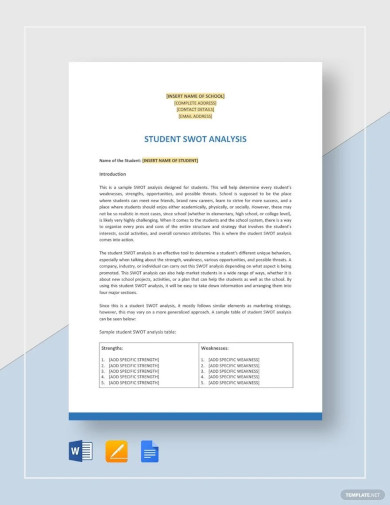
Personal Student SWOT Analysis
download now -
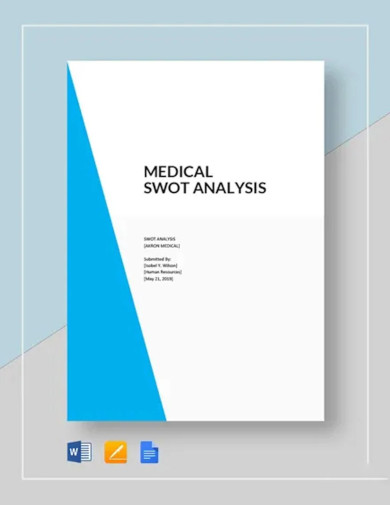
Medical Personal SWOT Analysis
download now -
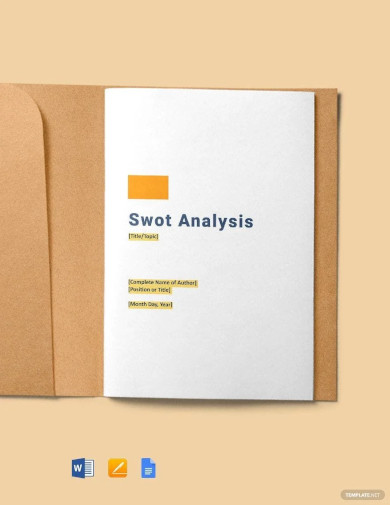
Blank Personal SWOT Analysis
download now -
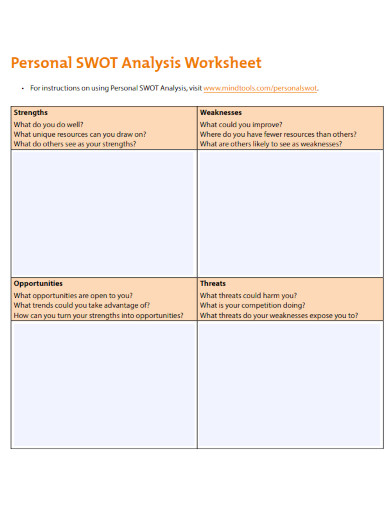
Personal SWOT Analysis Worksheet
download now -
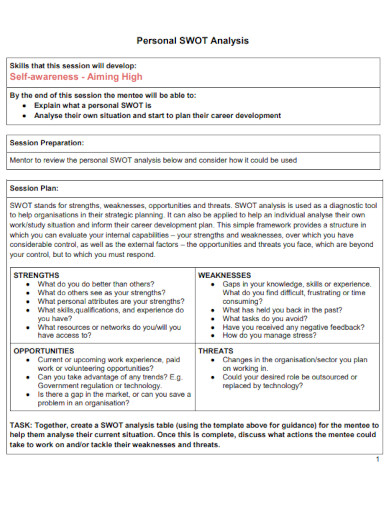
Draft Personal SWOT Analysis
download now -
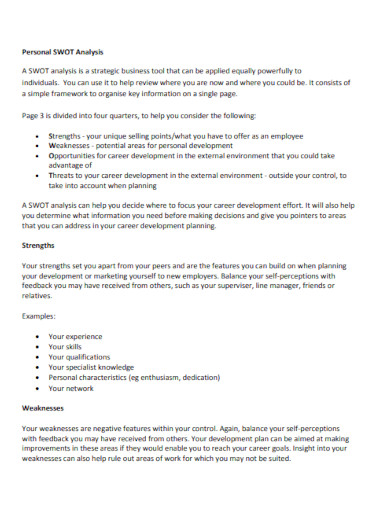
Personal Business SWOT Analysis
download now -
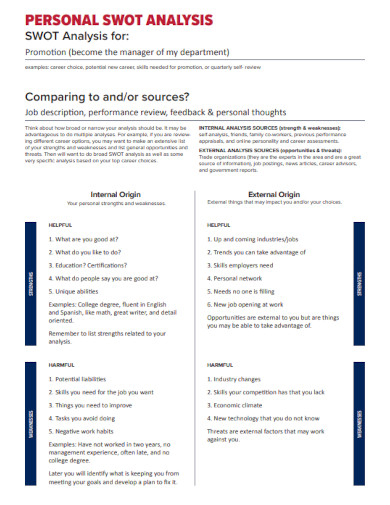
Personal SWOT Analysis Example
download now -
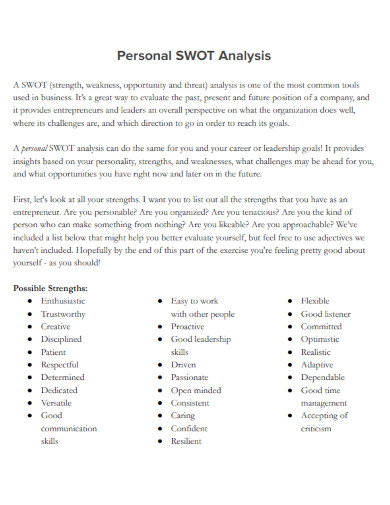
Personal Strategic SWOT Analysis
download now -
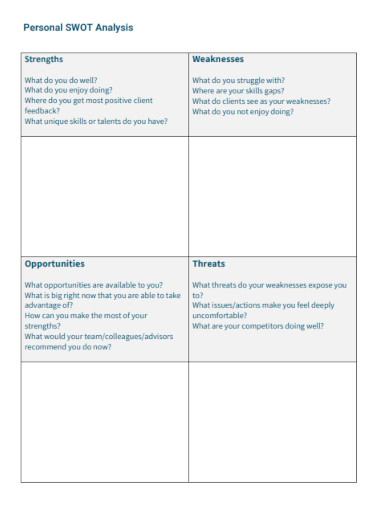
Personal Branding SWOT Analysis
download now -
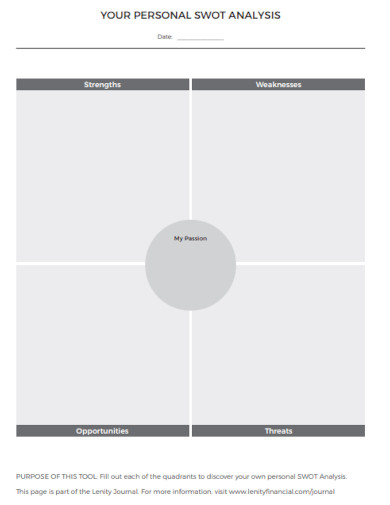
Editable Personal SWOT Analysis
download now -
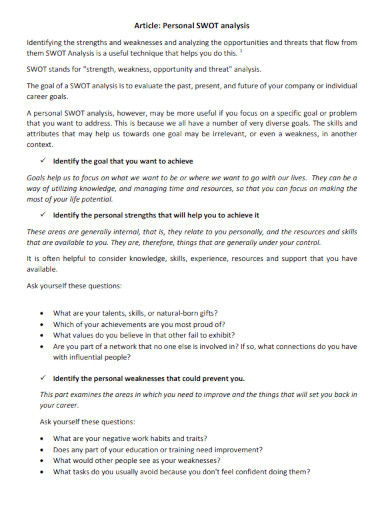
Professional Personal SWOT analysis
download now -

Personal Technology SWOT Analysis
download now -
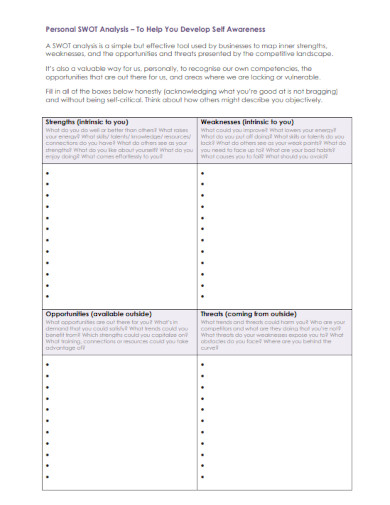
Assignment Personal SWOT Analysis
download now -
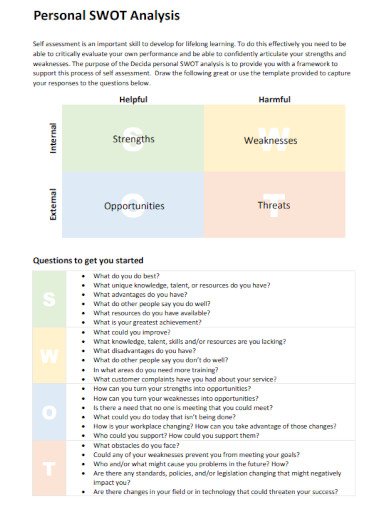
Sample Personal SWOT Analysis
download now -
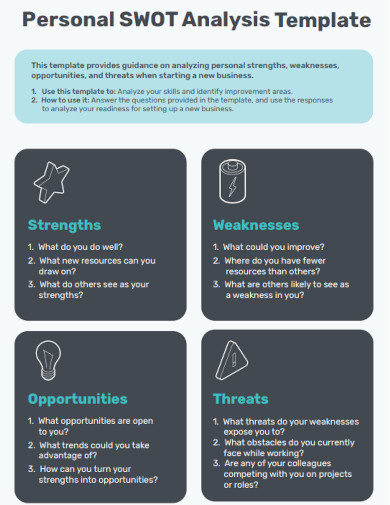
Simple Personal SWOT Analysis
download now -
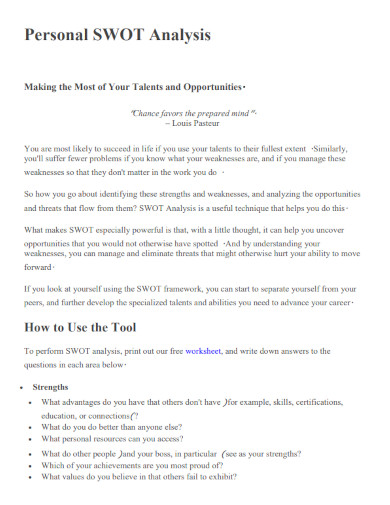
Personal SWOT Analysis for Class
download now -
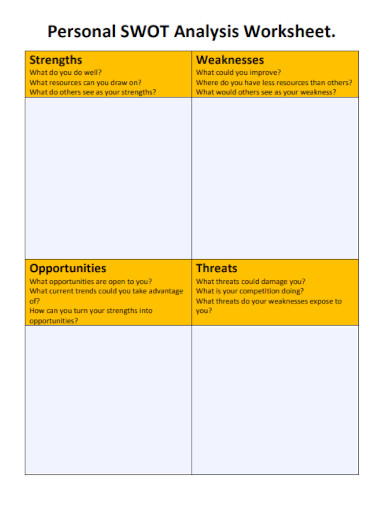
Personal SWOT Analysis Worksheet Format
download now -

Basic Personal SWOT Analysis
download now -
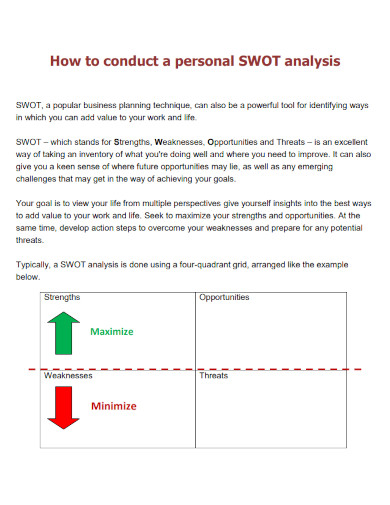
School Personal SWOT Analysis
download now -
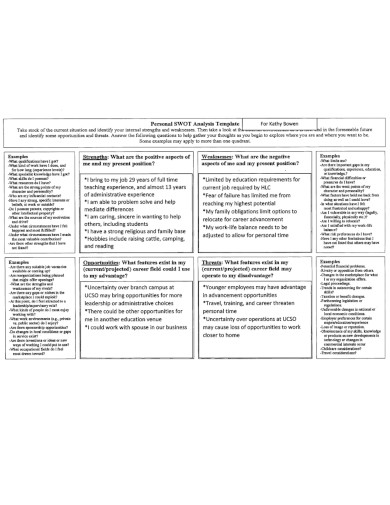
Personal Easy SWOT Analysis
download now -
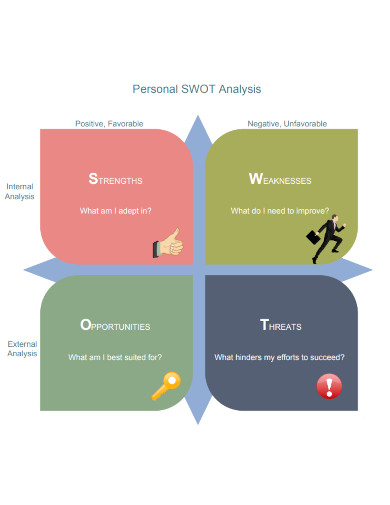
Personal Accountant SWOT Analysis
download now -
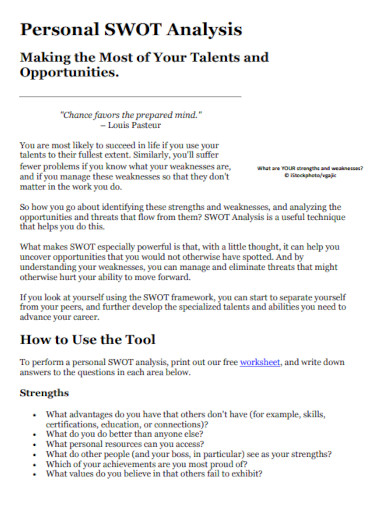
Personal Self SWOT Analysis
download now -
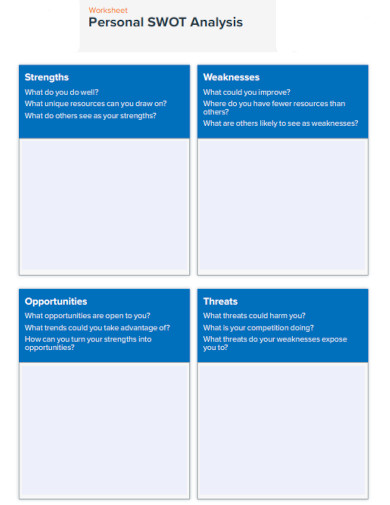
Personal Printable SWOT Analysis
download now -
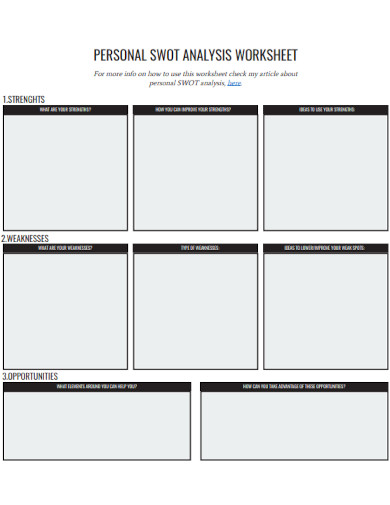
Personal SWOT Analysis Format
download now
FREE Personal SWOT Analysis s to Download
25+ Sample Personal SWOT Analysis
What Is a Personal SWOT Analysis?
Benefits of SWOT Analysis
Elements of a SWOT Analysis
How to Write a Personal SWOT Analysis
FAQs
How does SWOT analysis help an individual?
How does SWOT analysis help you to improve yourself?
What are external threats to a business?
What Is a Personal SWOT Analysis?
A SWOT analysis is a tried-and-true strategy for assessing strengths and vulnerabilities. The purpose of a SWOT analysis is not only to enumerate these factors but also to elaborate on them to enhance your personal and professional growth. A business SWOT analysis focuses primarily on products and services, whereas a personal SWOT analysis focuses on the individual. It may be administered before a job interview or during a self evaluation of the position. The strengths, weaknesses, opportunities, and threats can reveal where you stand and what you wish to accomplish.
Benefits of SWOT Analysis
Learning about the SWOT analysis model enables you to determine whether the instrument can assist you in conducting accurate business analysis. A list of SWOT analysis experts can assist you in evaluating its utility within an organization. Understanding this information is crucial for developing business-wide improvement strategies. Here are some advantages of using SWOT analysis:
Elements of a SWOT Analysis
Do not rely solely on your limited knowledge of your organization. Your presumptions can be incorrect. Instead, assemble a group of individuals from various roles and levels to create a thorough list of observations. Then, list each Strength, Weakness, Opportunity, or Threat you find in the appropriate area of the SWOT analysis grid so that everyone can see it. Let’s take a closer look at each site, think about what belongs where, and discuss the questions you may pose as part of your data collection.
1. Strengths
Your organization’s strengths are what it does exceptionally well or in a manner that sets it apart from competitors. Consider the advantages your organization has over competitors. These may include the motivation of your employees, access to specific materials, or a robust set of manufacturing processes. Remember that any aspect of your organization is only a virtue if it provides a distinct competitive advantage. For instance, if all your competitors offer high-quality products, a high-quality production process is not a competitive advantage in your market but a necessity.
2. Weaknesses
Focus on your organization’s people, resources, systems, and procedures. Weaknesses, like virtues, are inherent to your organization. Consider what could be improved and what practices should be avoided. Again, consider (or investigate) how others in your market perceive you. Do they perceive flaws that you tend to overlook? Consider how and why your competitors are performing better than you. What are you deficient in? A SWOT analysis is only helpful if you collect all the necessary information. Therefore, it is best to be pragmatic and confront unpleasant realities as soon as feasible.
3. Opportunities
Opportunities are openings or possibilities for something positive to occur, but you must seize them! They typically result from circumstances outside your organization and necessitate a view toward the future. They may result from changes in the market you serve or the technology you employ. Recognizing and capitalizing on opportunities can significantly impact your organization’s ability to compete and assume the market lead. Consider good opportunities you can exploit immediately. Even modest advantages can increase your organization’s competitiveness; they need not be game-changers. Moreover, alterations in social patterns, demographics, and lifestyles can generate intriguing opportunities.
4. Threats
Threats include anything that can negatively impact your business from the outside, such as supply-chain issues, changes in market requirements, or a lack of recruits. Before you become a victim of a threat and your growth pauses, it is vital to anticipate it and take action against it. Consider the challenges you face in bringing your product to market and selling it. You may observe that your products’ quality standards or specifications are shifting, and you will need to modify those products if you wish to maintain your market position. Constantly evolving technology is both a threat and an opportunity! Always consider what your competitors are doing and whether your organization’s focus should be altered to face the challenge. However, remember there are better courses of action than what they do. Therefore, only imitate them with an understanding of how it will benefit your position.
How to Write a Personal SWOT Analysis
To generate a standard SWOT analysis, divide a box into four squares. Each square comprises one of the SWOT categories: the situation’s strengths, weaknesses, opportunities, and threats. Use the rectangles to organize your lists according to the various categories. You may include as many items in the squares as necessary to produce a comprehensive conclusion. Follow these four stages to conduct a comprehensive self-SWOT analysis for a variety of professional situations:
1. List Your Relevant Assets
Evaluate what internal factors benefit you in your situation. These include any qualifications, skills, and abilities pertinent to the position. You may also have formal education, relevant work experience, certifications, official recognitions, and valuable training strategy plan. Your assets can also include testimonials and recommendations, professional connections, and a willingness to relocate or work remotely if conducting a SWOT analysis during your job search. When preparing a cover letter or resume for a job application, a list of your strengths can also assist you in identifying the most pertinent qualifications. If you prepare the analysis for an interview, please provide specific examples of how you have utilized these qualities and how they have benefited you.
2. Analyze Your Shortcomings
Be objective and truthful when listing weaknesses. This enhances the effectiveness of your analysis and generates beneficial conclusions. Thoroughly evaluating your deficiencies enables you to identify crucial improvement areas. In a recruitment situation, employers and interviewers prefer candidates who know their flaws and have logical improvement strategies. Weaknesses may also include factors that have the potential to hinder your productivity, such as latent medical conditions or periods of unavailability.
3. Understand Any Potential Threats
Any aspect of the situation that places you at a disadvantage is a potential threat for which you must plan and prepare. After you have compiled a list of potential hazards, prepare detailed plans to mitigate their risk or reduce their impact. Many threats can be converted into opportunities through careful evaluation and planning. Assume, for instance, that you are the proprietor of a stationery store. A new e-commerce site has entered your market and is consistently undercutting your prices through volume orders and effective marketing strategies. You may pursue a listing on that e-commerce website to increase sales reports while maintaining a profit with competitive pricing. Alternatively, you could secure a bank loan for bulk stationery purchases, enabling you to offer competitive pricing.
4. Make an Informed Decision
When evaluating your analysis, compare sections to understand the situation. Determine if your opportunities and assets can assist you in overcoming your threats and weaknesses. If your hazards and deficiencies are predominating, you should create systematic plans to counter them. Determine the methodologies for executing your goals, and identify the duties you can begin working on immediately.
FAQs
How does SWOT analysis help an individual?
It gives you information based on your personality’s strengths and weaknesses, the difficulties you anticipate, and the opportunities available to you both now and in the future. Through personal development, SWOT can aid individuals in becoming the best versions of themselves.
How does SWOT analysis help you to improve yourself?
Your strengths and weaknesses and the possibilities and dangers you face can all be analyzed using a SWOT matrix. This enables you to concentrate on your talents, minimize limitations, and maximize opportunities.
What are external threats to a business?
Instability in foreign markets’ political and legal systems, new and current competitors, new technologies that could render your goods or services obsolete, and economic downturns are a few examples of external dangers.
Although the SWOT analysis was originally designed for business analysis, governments, nonprofits, investors, and entrepreneurs utilize it frequently. Conduct a SWOT analysis for your organization by posing a number of the same queries. Consider your company’s market-related strengths, vulnerabilities, opportunities, and threats.
